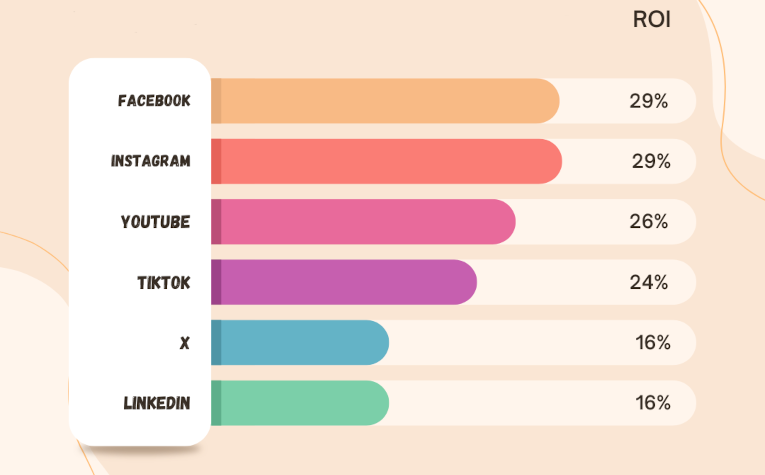Useful Articles - News

ROI in Social Media: Which Platform Delivers the Best Results?
Investing in social media marketing is now essential for any business. However, ROI (Return on Investment) varies significantly from platform to platform, depending on the industry, audience, and strategy. Below is an in-depth look at the advantages, disadvantages, and real performance of the six most important social media platforms.

Facebook remains one of the strongest players in digital marketing. With a massive user base and advanced targeting tools, it’s a consistent choice for businesses aiming at conversions.
ROI: High, especially for e-commerce and local services.
Advantage: Wide audience, multiple ad formats, strong retargeting capabilities.
Disadvantage: Organic reach has drastically declined, requiring constant ad investment.
The visual-first platform is especially favorable for B2C industries such as fashion, lifestyle, travel, and food. Engagement rates are high, though the market is quite saturated.
ROI: Medium -> High (depending on creativity and industry).
Advantage: Strong engagement, stories & reels with great reach, influencer marketing.
Disadvantage: Difficult to stand out, higher cost for quality creative content.
YouTube
The video platform is an investment with long-term value. YouTube videos continue to generate traffic and conversions for years, unlike most other social platforms.
ROI: High in the long run.
Advantage: Builds trust and SEO authority, ideal for educational or explanatory content.
Disadvantage: Higher production costs and the need for consistent strategy.
X (formerly Twitter)
X is primarily a real-time news and discussion platform rather than a conversion driver. Campaigns here perform better for branding, PR, and community engagement rather than direct sales.
ROI: Low -> Medium.
Advantage: Strong for current events, politics, tech, and media.
Disadvantage: Limited conversion potential, smaller user base compared to other platforms.
TikTok
TikTok has skyrocketed in recent years, offering massive levels of organic reach. With a relatively low ad budget, brands can gain huge exposure—provided they create authentic, short, and creative content.
ROI: High, especially among younger audiences.
Advantage: Viral potential, strong engagement, lower advertising costs.
Disadvantage: Limited effectiveness with older demographics, demands creativity and speed.
The leading platform for B2B marketing and professional networking. Although ad costs are higher, the value of each lead is significantly greater since it targets decision-makers and business executives.
ROI: High (particularly in B2B sectors).
Advantage: Professional audience, precise targeting tools, high-quality leads.
Disadvantage: Higher CPC, less effective for B2C products or services.

